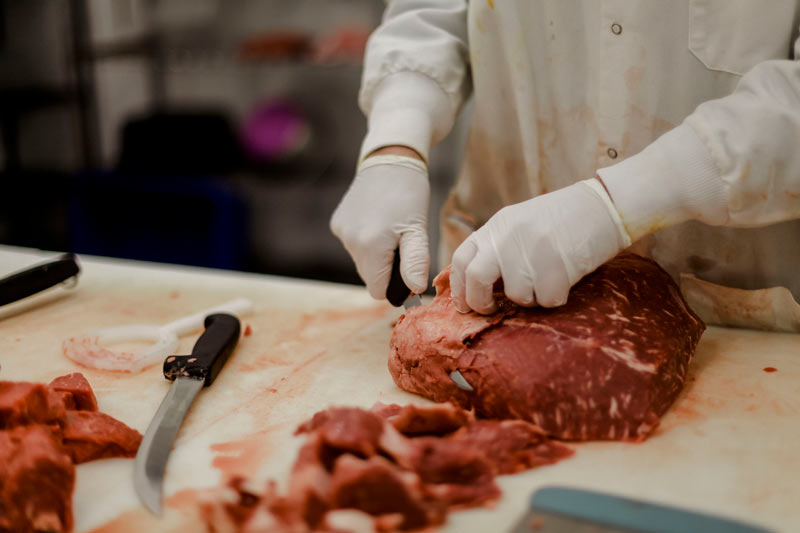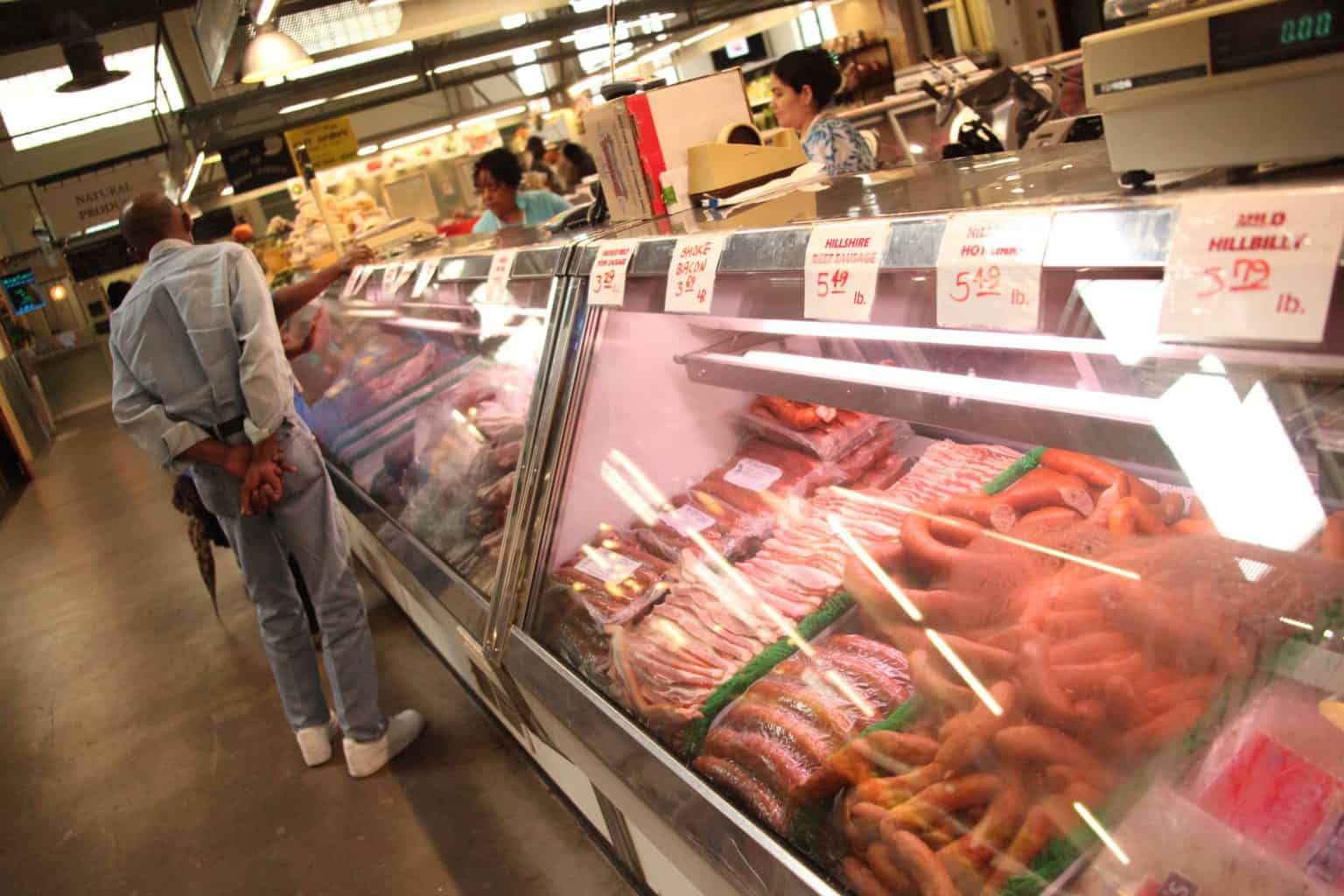What Makes Bagley Farms Meat Market Edwardsville IL Stick Out for Meat Lovers
What Makes Bagley Farms Meat Market Edwardsville IL Stick Out for Meat Lovers
Blog Article
Discover the Art of the Butcher's Cut in a Modern Meat Market
In the ever-evolving landscape of modern-day meat markets, the butcher's cut has transcended its typical roots, combining olden workmanship with contemporary practices. What genuinely sets the contemporary butcher apart is their ability to create a much deeper connection between customers and the origins of their meat.
Evolution of Butchery Strategies
The advancement of butchery methods reflects an abundant tapestry of advancement and adjustment driven by developments in technology, adjustments in consumer need, and a deeper understanding of meat scientific research. Historically, butchery was a craft passed down with generations, with approaches honed over centuries to take full advantage of return and flavor. The commercial change ushered in mechanization, transforming standard techniques and enabling large-scale processing.
The mid-20th century saw butchery strategies better refined by scientific insights right into muscular tissue biology and meat aging, boosting both tenderness and taste. Advancements like vacuum packaging and refrigeration prolonged product shelf-life, permitting butchers to expand offerings and improve quality control. This period likewise marked the increase of specific devices, such as band saws and meat slicers, which boosted accuracy and performance in meat handling.

The 21st century has actually presented digital technology into the butchery realm. Digital systems currently assist in monitoring animal provenance and optimizing cuts to meet details consumer choices. In addition, a renewal in artisanal butchery has emerged, mixing typical abilities with modern-day expertise to provide to customers looking for moral and sustainable meat options. This evolution underscores a dynamic interaction in between tradition and innovation, conference contemporary demands while maintaining the craft's heritage.
Understanding Meat Cuts
Understanding the ins and outs of meat cuts is essential for both butchers and consumers looking for quality and value. For butchers, exact cuts show skill and respect for the craft, making sure marginal waste and optimal yield.

Understanding muscular tissue structure is critical; muscular tissues utilized more regularly by the animal tend to be harder and are best suited for slow-moving food preparation approaches, while less-used muscles, like those located in the loin, are a lot more tender and ideal for cooking or roasting. Experience with these differences equips customers to make informed selections, enhancing their cooking endeavors.
Picking Quality Meat
Choosing the ideal meat involves even more than just choosing a visually attractive item from the screen. bagley farms meat market edwardsville il. The art of picking high quality meat calls for a critical eye and knowledge of details characteristics that indicate freshness and quality. Pay attention to the color; beef must have a bright, cherry-red shade, while lamb should display a soft pink tone, and pork a light pink. This indicates the meat is fresh and hasn't been subjected to oxygen for also you can find out more lengthy.
Second of all, take into consideration the marbling, which describes the white flecks of fat within the muscle. Correct marbling is a key indicator of tenderness and flavor, as it melts during cooking, enhancing the meat's juiciness. Keep in mind, higher marbling often correlates with premium quality cuts, such as USDA Prime.
Texture is one more vital aspect; meat must really feel firm to the touch, not slimy or extremely soft. In addition, bear in mind the aroma. Fresh meat needs to have a tidy, neutral scent, without any sour or off-putting smells.
Matching Cuts With Food Preparation Methods

Alternatively, tougher cuts like brisket and chuck roast are abundant in collagen, which damages down right into jelly when cooked slowly. These cuts are optimal for braising or slow-moving roasting, allowing the meat to tenderize gradually and create deep, intricate flavors. Similarly, cuts such as short ribs and pork shoulder get on well with slow-cooking techniques, where expanded cooking times change their durable appearances right into succulent dishes.
Lamb shanks and oxtail, which need extended cooking to tenderize, are ideal candidates for stewing or slow simmering. These methods coax out rich, hearty tastes while keeping dampness. By recognizing the one-of-a-kind features of each cut, cooks and home chefs alike can raise their culinary developments, making sure each meal is both satisfying and memorable.
The Butcher's Function Today
Browsing the evolving landscape of the contemporary meat his comment is here market, the butcher's role today prolongs beyond simple preparation of cuts. Contemporary butchers are cooking artisans, educators, and advocates for sustainable techniques.
In addition to crafting precise cuts, butchers currently engage straight with clients, offering cooking recommendations and customizing review options to fit specific needs and preferences. Their knowledge in meat aging, marbling, and taste accounts empowers consumers to make enlightened choices, improving their cooking experiences. This personalized service exemplifies the butcher's advancing duty as a trusted consultant in the kitchen area.
In addition, butchers are critical in lessening waste, using entire pets to create diverse products such as sausages and stocks. This detailed strategy not just values the pet but additionally straightens with contemporary sustainability goals. In this way, the contemporary butcher symbolizes both custom and development, adjusting to an ever-changing market while maintaining the virtuosity and honesty of their craft.
Verdict
Proficiency in comprehending diverse meat cuts and top quality signs empowers butchers to give enlightened suggestions, aligning details cuts with ideal cooking approaches. By honoring historic methods while welcoming modern demands, the butcher's duty remains vital in today's innovative meat market.
Report this page